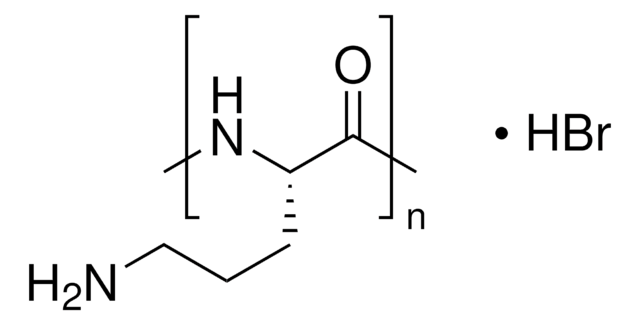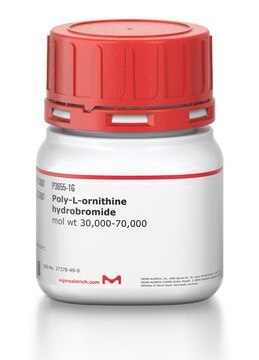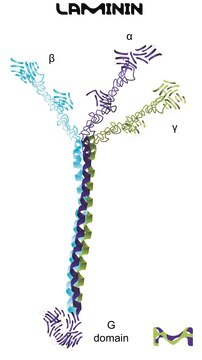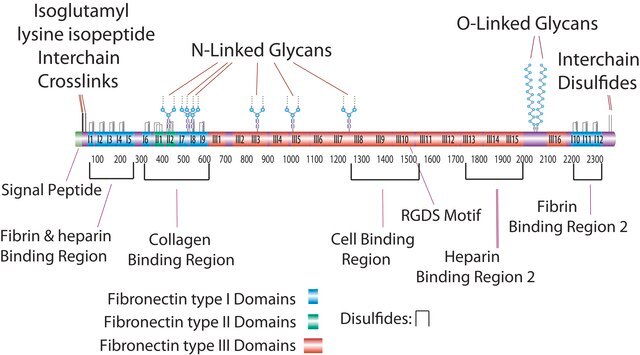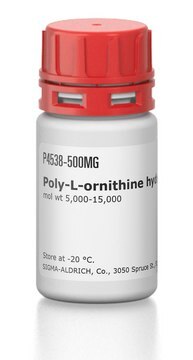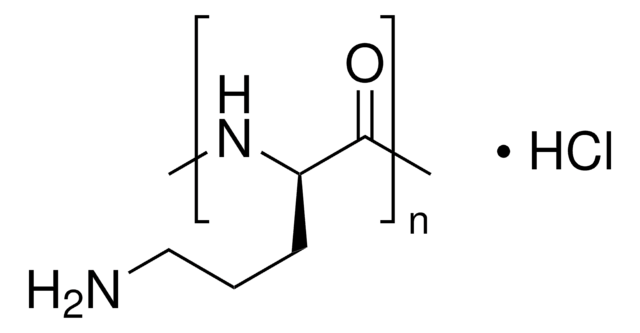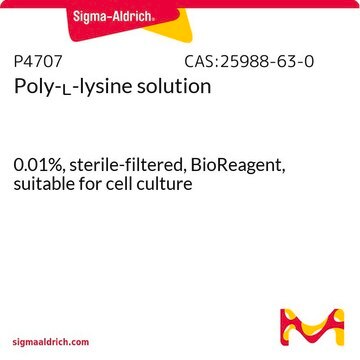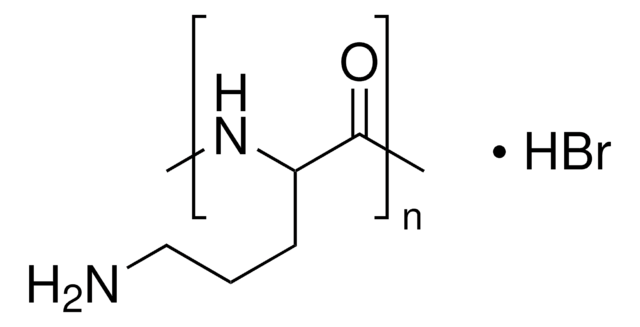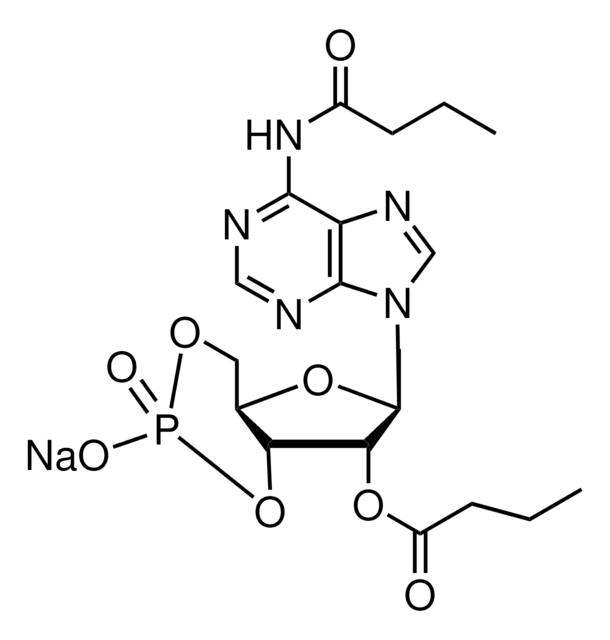A-004-M
Poly-ʟ-Ornithine
synthetic, liquid, 0.1 mg/mL, suitable for cell culture
Synonym(s):
Poly-L-Ornithine Solution (0.01%), A-004-M, Sigma-Aldrich
About This Item
Recommended Products
product name
Poly-L-Ornithine Solution (0.01%),
needle size
2.0 mm
Quality Level
sterility
sterile
form
liquid
mol wt
Mw 78000 Da
manufacturer/tradename
NovaSeptum®
concentration
0.01 % (w/v)
0.1 mg/mL
technique(s)
cell attachment: suitable
cell culture | mammalian: suitable
Related Categories
General description
Research Sub Category: Adhesion (CAMs)
Application
- glass-bottom plates for cell plating in a research study investigating the localization of cMET in MDA-MB-468 cells using confocal microscopy
- culture dishes for adult human neural stem cells (ahNSCs) primary culture
- 6-well plates for induced pluripotent stem cells (iPSCs) culture and neuronal differentiation
Quality
Physical form
Preparation Note
2. Dilute Poly-L-Ornithine solution to the desired concentration in sterile water.
3. Fully coat the cell culture surface with diluted Poly-L-Ornithine solution. Use 5 mL volume for 6-cm plates and 10 mL volume for 10-cm plates and T75 flasks.
4. Allow the cell culture vessel to sit at room temperature overnight.
5. Aspirate the Poly-L-Ornithine solution the following day and rinse the vessel with sterile water followed by coating with desired ECM protein. Optimal coating concentrations must be determined by the end user. Typical coating concentrations range from 10ug/ml to 100ug/ml based on cell type and application.
Storage and Stability
Legal Information
Disclaimer
wgk_germany
WGK 1
flash_point_f
Not applicable
flash_point_c
Not applicable
Certificates of Analysis (COA)
Search for Certificates of Analysis (COA) by entering the products Lot/Batch Number. Lot and Batch Numbers can be found on a product’s label following the words ‘Lot’ or ‘Batch’.
Already Own This Product?
Find documentation for the products that you have recently purchased in the Document Library.
Customers Also Viewed
Articles
This page describes a novel, optimized microfluidic platform for long-term culture of primary neurons to monitor dynamic cellular processes in real time.
Extracellular matrix proteins such as laminin, collagen, and fibronectin can be used as cell attachment substrates in cell culture.
Our team of scientists has experience in all areas of research including Life Science, Material Science, Chemical Synthesis, Chromatography, Analytical and many others.
Contact Technical Service